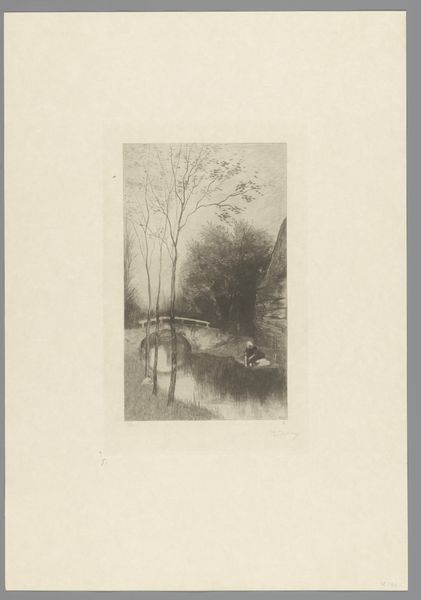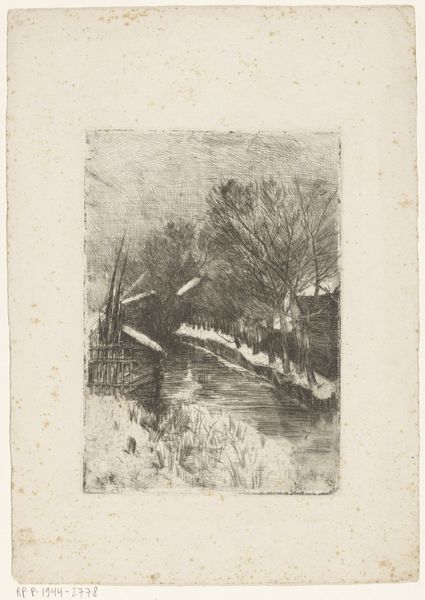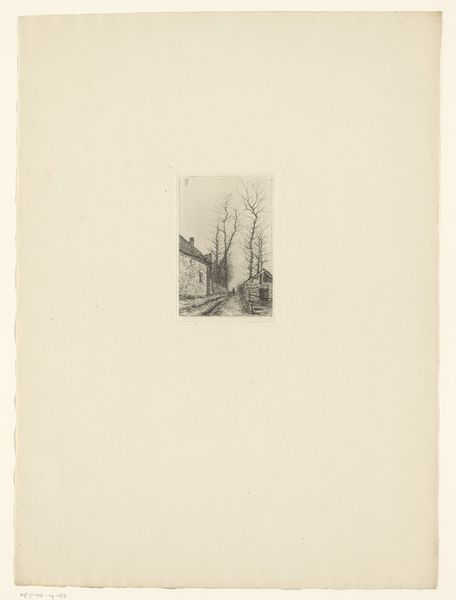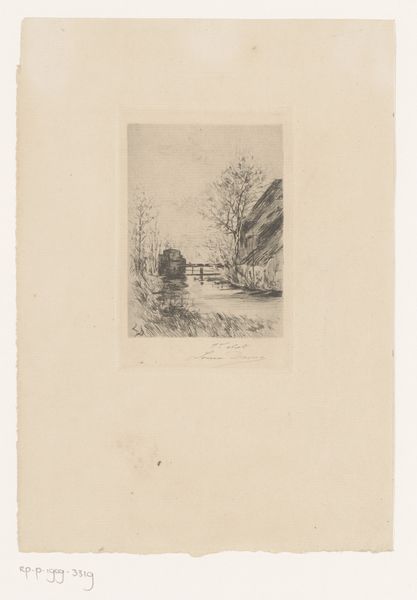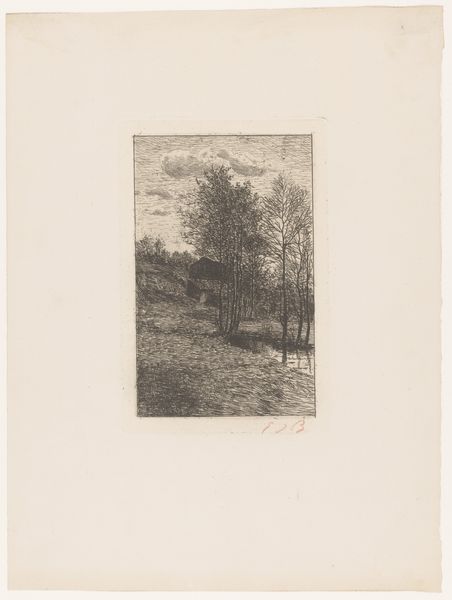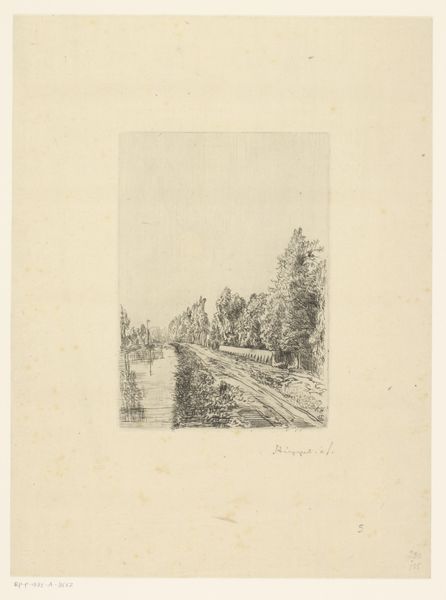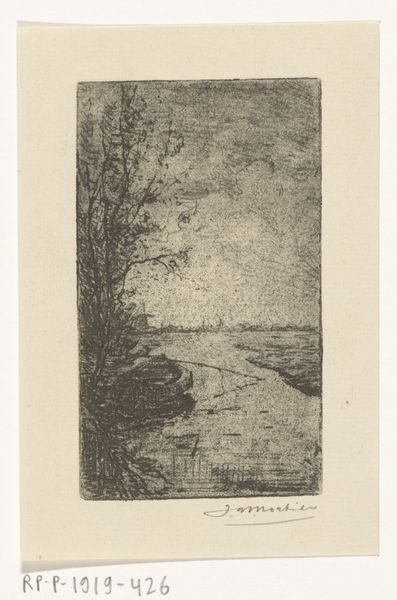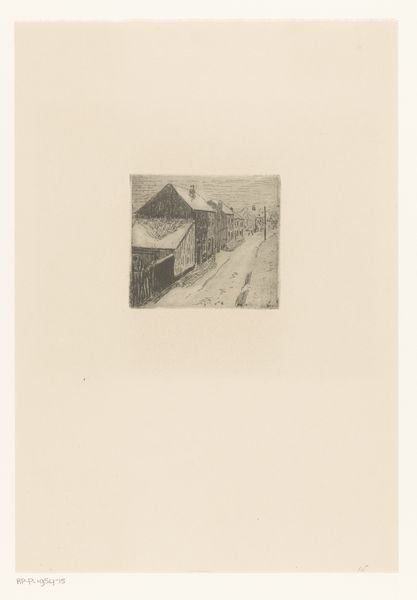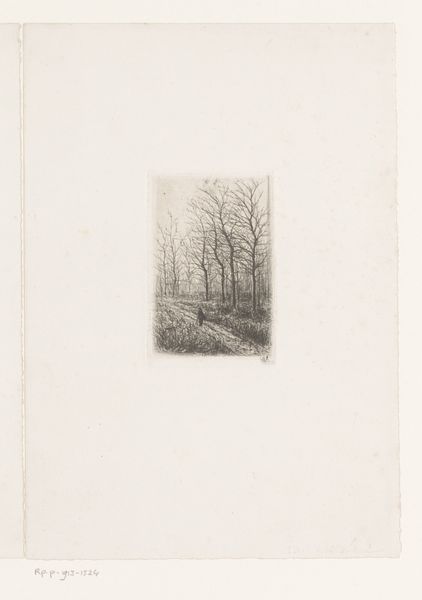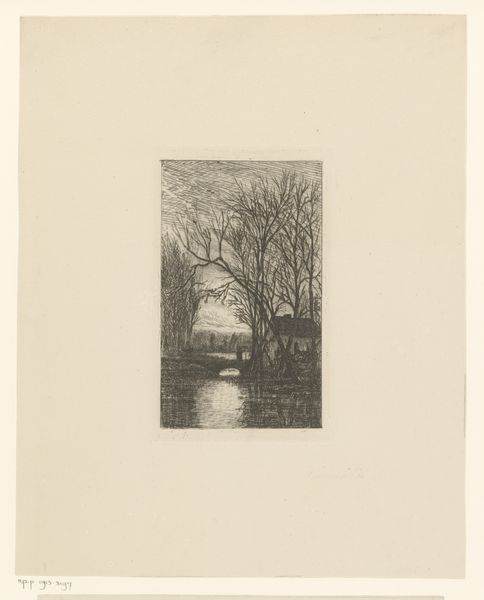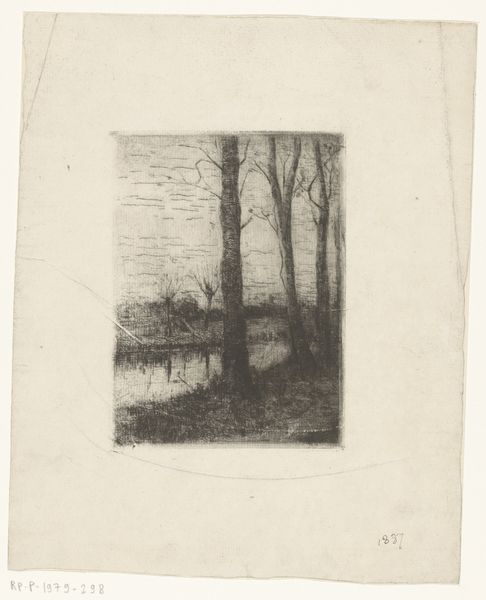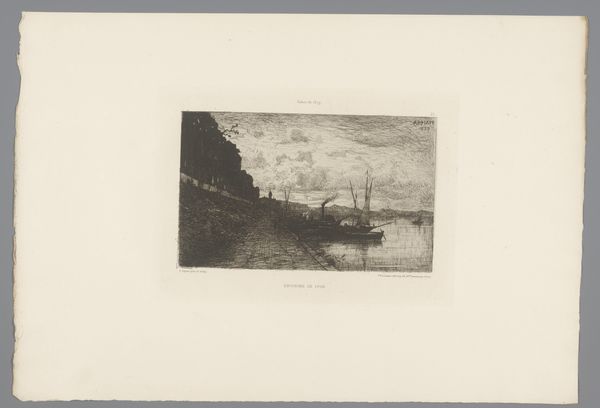
print, etching
#
tree
# print
#
impressionism
#
etching
#
landscape
#
realism
Dimensions: height 148 mm, width 111 mm
Copyright: Rijks Museum: Open Domain
Curator: This is "Weg langs gebouwen en bomen," or "Road Along Buildings and Trees," an etching made around 1883 by Philip Zilcken. It currently resides here at the Rijksmuseum. What are your initial thoughts? Editor: Intimate. Melancholy, almost. It’s a grey day captured in tight, economical lines. The bare tree reaching out over the path makes me feel like winter's clinging on. Curator: Interesting observation! Zilcken was known for capturing urban landscapes with a realist bent, influenced also by Impressionism. As an etching, the labor involved would be fairly significant – the meticulous scratching of the image onto the plate, the application of the ink... it speaks to a deliberate act of translation from observed reality. Editor: Exactly! You can feel the weight of each etched line. Look at the way the texture of the road’s rendered, that gritty surface underfoot almost. It makes you wonder about the conditions of the artist and what life must have been like there. The consumption is implied - the bare bones. Curator: Indeed. And note how the buildings aren’t romanticized; they're just there, functional. This pulls from that realist perspective while also managing to soften into almost picturesque through the light's atmospheric rendering of shadow. Do you think he's trying to elevate everyday labor or document class? Editor: I don't think he's explicitly trying to advocate. This looks more like an exploration of visual space and tonality but it becomes difficult to completely extricate art from the social dimensions of artistic production and consumption when depicting everyday urban subjects as this, a testament, perhaps to Impressionism. The absence of human presence feels stark; the artist may be asking who gets to experience such quietude? It gets your gears turning about the scene behind and around the camera in such situations. Curator: Very well observed, by noting the production alongside these impressions, we see what impact its history and context have made. So this tiny print, full of material history and observation. What’s the lasting image that'll stick with you? Editor: It will have to be that reaching tree. Stripped and exposed, it holds a mirror to the time and place while grounding itself in the now of our own interpretation. A silent witness to countless passing moments.
Comments
No comments
Be the first to comment and join the conversation on the ultimate creative platform.
